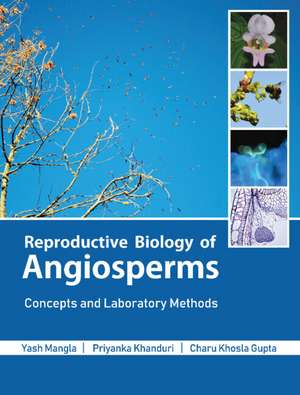Reproductive Biology of Angiosperms: Concepts and Laboratory Methods
Autor Yash Mangla, Priyanka Khanduri, Charu Khosla Guptaen Limba Engleză Paperback – 4 ian 2023
Preț: 389.66 lei
Nou
Puncte Express: 584
Preț estimativ în valută:
74.57€ • 77.41$ • 62.18£
74.57€ • 77.41$ • 62.18£
Carte disponibilă
Livrare economică 01-15 martie
Livrare express 15-21 februarie pentru 43.13 lei
Preluare comenzi: 021 569.72.76
Specificații
ISBN-13: 9781009160407
ISBN-10: 1009160400
Pagini: 600
Dimensiuni: 182 x 241 x 21 mm
Greutate: 0.73 kg
Ediția:Nouă
Editura: Cambridge University Press
Colecția Cambridge University Press
Locul publicării:Cambridge, United Kingdom
ISBN-10: 1009160400
Pagini: 600
Dimensiuni: 182 x 241 x 21 mm
Greutate: 0.73 kg
Ediția:Nouă
Editura: Cambridge University Press
Colecția Cambridge University Press
Locul publicării:Cambridge, United Kingdom
Cuprins
Foreword; Preface; Acknowledgments; Chapter 1. An Introduction to the Reproductive Biology of Flowering Plants; Chapter 2. The Flower; Chapter 3. Brief Historical Account on Transformation of Classical Embryology to Integrated Reproductive Biology; Chapter 4. The Anther and Male Gametophyte; Chapter 5. The Ovule and Female Gametophyte; Chapter 6. Pollination; Chapter 7. Pollen–Pistil Interaction and Fertilization; Chapter 8. Self-Incompatibility; Chapter 9. Endosperm; Chapter 10. Zygotic Embryogenesis; Chapter 11. Polyembryony and Apomixis; Chapter 12. Seed; Chapter 13. Plant Germline Transformation; Color Plates.
Notă biografică
Descriere
This textbook is a resource for undergraduate and graduate students in the field of life sciences, botany, and plant sciences.
